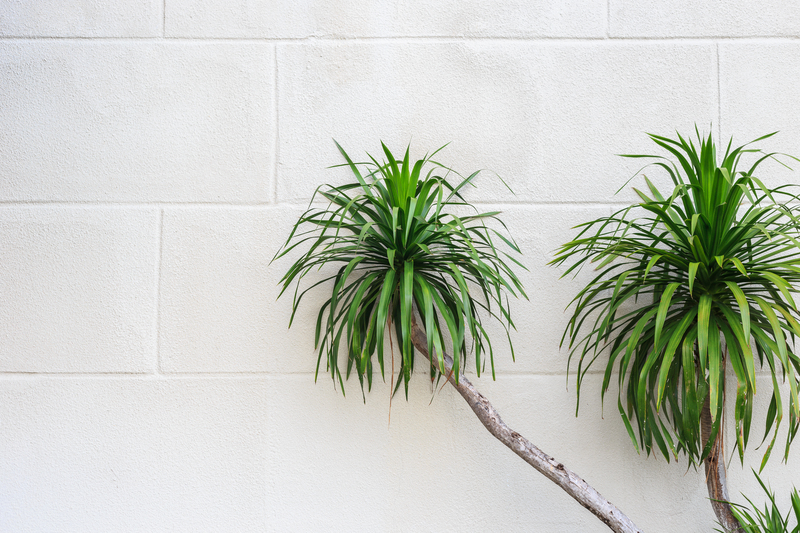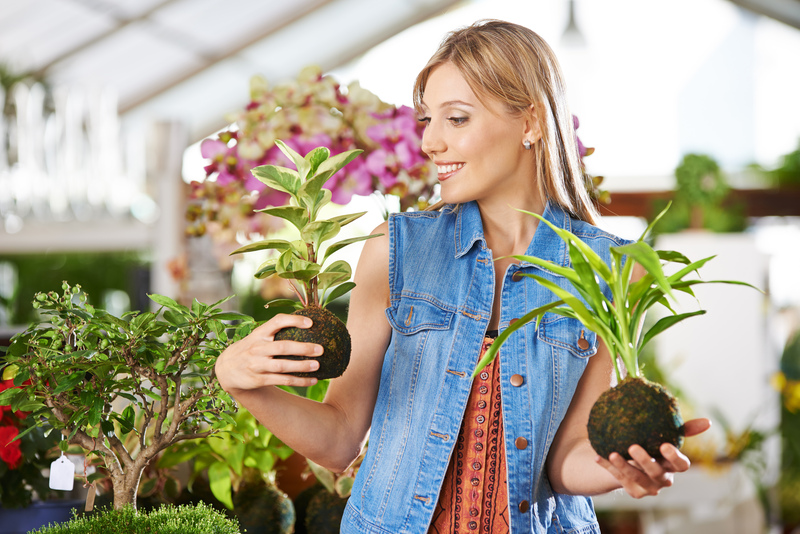Discover the art of container gardening
Posted on 26/08/2025
Discover the Art of Container Gardening: A Comprehensive Guide
Container gardening is a delightful and accessible way to bring nature into your living space--be it a compact balcony, small backyard, rooftop, or even a sun-drenched windowsill. With a little creativity and some foundational knowledge, anyone can create beautiful, thriving gardens in almost any space. In this guide, we will uncover the secrets to mastering the art of container gardening, offering invaluable tips, design ideas, plant recommendations, and maintenance advice for both beginners and seasoned green thumbs.
What is Container Gardening?
The art of container gardening involves growing plants exclusively in containers instead of directly in the ground. These containers can range in size, material, and design--from classic terracotta pots to upcycled items like buckets or crates. Container gardening is perfect for urban dwellers and anyone with limited outdoor space, offering flexibility, mobility, and the chance to experiment with plant arrangements and styles.

Why Choose Container Gardening?
- Space efficiency: Ideal for small patios, balconies, rooftops, and even indoor gardening.
- Mobility: Rearrange pots as needed for optimal sunlight and design changes.
- Pest management: Easier to control pests compared to traditional garden beds.
- Accessibility: Suitable for all ages and physical abilities, as containers can be placed at comfortable heights.
- Design versatility: An endless array of colors, shapes, and textures lets you create personalized garden arrangements.
Getting Started: Essential Steps in Container Gardening
1. Selecting the Right Containers
Choosing the right container is a crucial step in successful container gardening. Think about both functionality and aesthetics as you make your selection.
- Material: Clay and terracotta offer breathability but can dry out quickly. Plastic pots are lightweight and retain moisture. Metal and wood add character but may need liners for longevity.
- Size: Ensure your pot is large enough for the root system, providing ample space for growth and stability.
- Drainage: Good drainage is essential to prevent waterlogging and root rot. Ensure containers have holes at the base.
- Personal style: Be creative! Use unconventional containers like teacups, baskets, or old boots for a touch of whimsy.
2. Picking the Best Potting Mix
The soil in containers plays a far greater role in plant health than you might expect, as roots are confined to a small space.
- Buy a high-quality potting mix specifically formulated for container gardening--never use garden soil, which may compact and suffocate roots.
- For specific plants, choose specialized mixes (e.g., cactus mix for succulents, ericaceous compost for acid-loving plants).
- Consider adding perlite or vermiculite to improve aeration and drainage.
3. Choosing Your Plants
Selecting the right plants is where the artistry of container gardening really shines! Mix and match for stunning color, texture, and seasonal interest.
- Annuals and Perennials: Petunias, marigolds, pansies, and geraniums provide bold color; lavender, hostas, and heucheras offer longevity and foliage interest.
- Edibles: Try herbs like basil, chives, and mint; veggies like lettuce, spinach, and tomatoes; or compact fruit varieties.
- Succulents and Cacti: Best for sunny spots and those seeking low-maintenance container gardens.
- Seasonal Swaps: Rotate plant selections with the seasons for year-round beauty.
4. Arranging Your Container Garden
The arrangement of plants can transform a simple container into a living work of art. A classic method in the world of container gardening is "Thriller, Filler, Spiller":
- Thriller: A tall, eye-catching plant as the centerpiece (e.g., ornamental grass, canna lily).
- Filler: Mounding plants that add volume around the thriller (e.g., petunias, coleus).
- Spiller: Trailing plants that cascade over the edge of the pot (e.g., sweet potato vine, ivy).
Design tips: Consider color theory--complementary colors pop, while analogous colors soothe. Vary leaf shape and size for interest. Don't be afraid to experiment!
Key Techniques for Success in Container Gardening
Watering Wisdom
Proper watering is vital in container gardening. Pots dry out more quickly than garden beds, especially in hot weather.
- Frequency: Most container gardens need watering once a day in summer. Test soil moisture regularly by poking a finger into the mix; water when the top inch feels dry.
- Early morning or late evening watering reduces evaporation and keeps plants hydrated.
- Consider self-watering containers for busy lifestyles or set up a simple drip irrigation system.
Feeding Your Plants
Since nutrients leach out of containers faster due to frequent watering, consistent fertilization is essential:
- Add a slow-release fertilizer when planting, supplementing with liquid feed every 2-3 weeks during the growing season.
- Use organic options like fish emulsion or worm castings for an eco-friendly approach.
- Monitor for nutrient deficiencies--yellowing leaves often indicate a need for more feeding.
Pruning and Deadheading
Regular maintenance will keep your container garden lush and healthy. Remove dead flowers (deadheading) to encourage continuous blooming. Pinch or prune back stems to maintain shape, promote bushier growth, and remove any damaged or diseased foliage.
Creative Container Gardening Ideas
1. Vertical Container Gardens
Short on surface area? Go vertical! Use wall-mounted planters, hanging baskets, or tiered plant stands. Vertical container gardening is perfect for urban balconies and maximizes small spaces while making a dramatic visual impact.
2. Themed Container Gardens
Create themed displays--a kitchen herb garden with rosemary, thyme, and basil; a pollinator-friendly container with lavender, salvia, and coneflower; or a scented patio garden with night-blooming jasmine and gardenias.
3. Edible Container Gardens
Grow your own produce with container-friendly vegetables and fruits. Tomatoes, peppers, strawberries, carrots, and salad greens thrive in pots. Even dwarf fruit trees like lemons or figs can be grown successfully in containers on sunny patios.
4. Sensational Succulent Gardens
Succulents and cacti are ideal for low-maintenance container gardening. Use shallow dishes, quirky mugs, or rustic boxes filled with sandy, fast-draining soil. Group multiple varieties for a modern, sculptural effect.
Caring for Your Container Garden Year-Round
- Seasonal changes: In cold climates, move delicate pots indoors or insulate with bubble wrap in winter. Swap summer annuals for ornamental kale, pansies, or evergreens in autumn.
- Pest Control: Inspect regularly for aphids, spider mites, or fungal issues. Treat organically with neem oil or insecticidal soap where possible.
- Repotting: Refresh soil and root prune or upsize containers every 1-2 years for continued vigor.
Common Challenges and Solutions in Container Gardening
- Rootbound plants: If roots circle densely in the pot, it's time to move to a bigger home or divide the plant.
- Wilting despite watering: Check for blocked drainage holes or compacted soil trapping water at the roots.
- Leggy growth: Often due to insufficient sunlight. Move containers to a brighter spot or choose shade-loving plants.
Eco-Friendly Container Gardening Tips
- Reuse and recycle containers creatively--wooden crates, old boots, or teapots all make unique plant homes.
- Choose native or drought-tolerant plants for your location to reduce water usage.
- Compost at home and add organic matter to your potting mix.
The Joy and Artistry of Container Gardening
Container gardening is more than just a practical solution for small spaces--it's an opportunity for self-expression and creative exploration. Whether you dream of lush, overflowing displays or minimalist, modern arrangements, the art of container gardening allows you to craft your own green sanctuary, one pot at a time.
As you try new combinations, experiment with designs, and watch your plants flourish, you'll develop not only a deeper understanding of horticulture but also a profound appreciation for the simple joy of nurturing life. There's always room for another container, another bloom, another burst of color--so start your container garden today and let your creativity blossom!

Frequently Asked Questions about Container Gardening
- What are the best plants for container gardening?
- Herbs (basil, thyme, mint)
- Salad greens (lettuce, spinach, arugula)
- Compact vegetables (tomatoes, peppers, radishes)
- Annuals and perennials (petunias, pansies, hostas)
- Succulents and small evergreens
- How often should I water my container plants?
- Daily during hot, dry weather; less frequent during cooler seasons or with self-watering containers. Always check soil moisture first.
- Can I use any container for gardening?
- Almost any container works if it has drainage holes and is large enough for your chosen plants.
Conclusion: Discovering the Art of Container Gardening
Container gardening is a rewarding hobby suitable for every skill level and space limitation. By selecting the right pots, using quality soil, and choosing plants suited to your environment, you can create vibrant living displays that enhance any indoor or outdoor area. With patience, care, and a dash of imagination, you'll soon master the art of container gardening--cultivating not only green spaces but also a sense of satisfaction and wonder. Begin your journey today and discover just how transformative container gardening can be for your home, your mood, and your connection with nature.

